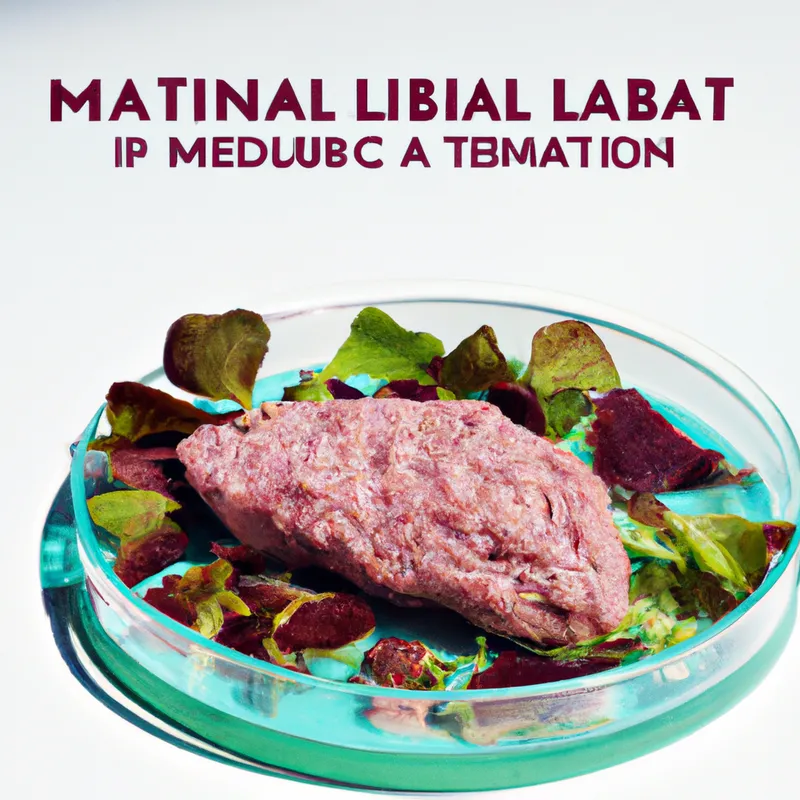Rethink Pet Nutrition: Embrace Lab-Grown Options
Lab-Grown Meat and the Future of Pet Food
Lab-grown meat offers a sustainable alternative to traditional meat. This innovative method can enhance both our diets and pet nutrition. Pet owners increasingly want healthier, ethical food options for their pets. Lab-grown meat meets these needs while addressing environmental concerns.
Understanding Lab-Grown Meat
Lab-grown meat, or cultured meat, comes from animal cells cultivated in controlled environments. This technique eliminates traditional livestock farming. Scientists extract a small sample of animal muscle cells and nurture them in labs to create meat products. This method avoids the ethical issues tied to conventional meat harvesting and can revolutionize the food industry.
How Lab-Grown Meat is Made
Producers extract cells from live animals using painless biopsies. They place these cells in nutrient-rich culture mediums that support growth. Within weeks, cells multiply and develop muscle tissue similar to traditional meat. This scalable process can produce various meat products, from ground meat to steaks.
Benefits for Pets
Lab-grown meat provides high-quality protein without ethical concerns linked to conventional meat production. Pet owners who prioritize animal welfare and sustainability will appreciate this. Additionally, lab-grown meat can meet specific nutritional needs, allowing owners to choose diets that promote pet health and well-being.
Addressing Nutritional Needs
Manufacturers can design lab-grown meat to match pets’ unique dietary requirements. Different pets need various nutrients based on species, size, and health. For instance, some dogs may need higher protein, while others may require lower fat. Lab-grown meat allows adjustments to nutritional profiles, ensuring balanced diets for optimal pet health.
Moreover, lab-grown meat can eliminate allergens in traditional pet food, offering options tailored to pets’ sensitivities.
The Environmental Impact
Lab-grown meat significantly reduces environmental harm compared to traditional meat production. Conventional methods contribute greatly to greenhouse gas emissions, land degradation, and water use. Shifting to lab-grown meat can lower these emissions and conserve vital resources.
Reducing Carbon Footprint
Research shows lab-grown meat can greatly reduce the carbon footprint of pet food production. Compared to livestock farming, lab-grown meat emits far fewer greenhouse gases. Studies suggest cultured meat could cut emissions by up to 90%, depending on the methods used.
Conclusion
Lab-grown meat presents a promising future for pet food, enhancing nutrition and sustainability while minimizing ethical concerns.
Below are related products based on this post:
FAQ
What is lab-grown meat and how is it produced?
Lab-grown meat, also known as cultured meat, is produced by cultivating animal cells in controlled environments. Scientists extract a small sample of muscle cells from live animals using painless biopsies and place them in nutrient-rich culture mediums. Over a few weeks, these cells multiply and develop muscle tissue that resembles traditional meat, providing a sustainable alternative to conventional livestock farming.
How does lab-grown meat benefit pet nutrition?
Lab-grown meat offers high-quality protein without the ethical concerns associated with traditional meat production. It can be tailored to meet the specific nutritional needs of pets, allowing owners to provide diets that promote their pets’ health and well-being. Additionally, it can eliminate allergens found in traditional pet food, offering options better suited for sensitive pets.
What is the environmental impact of lab-grown meat compared to traditional meat?
Lab-grown meat significantly reduces environmental harm compared to conventional meat production. It contributes to lower greenhouse gas emissions, land degradation, and water use. Research indicates that lab-grown meat could cut emissions by up to 90%, making it a more sustainable choice for pet food and helping to conserve vital environmental resources.















Post Comment